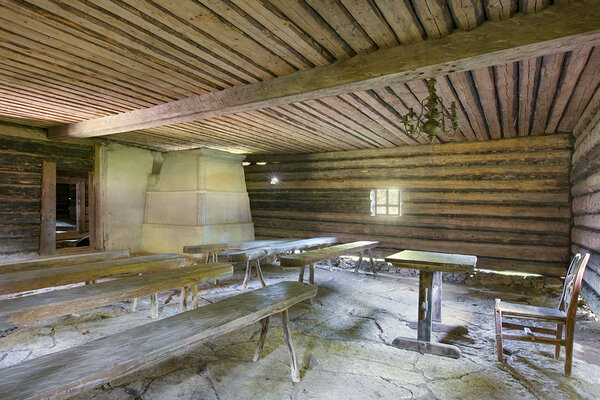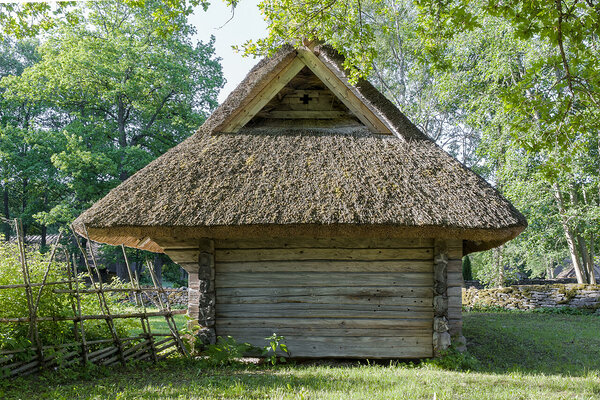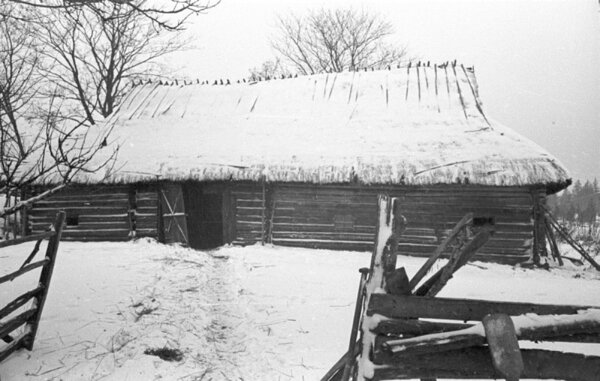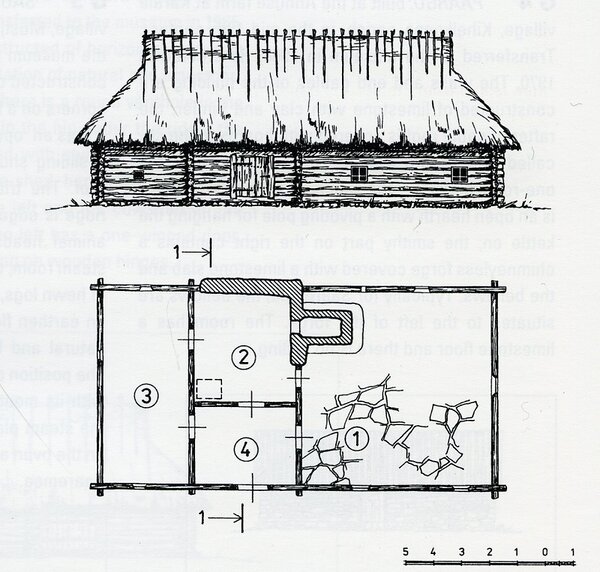18th C
The Moravian Church prayer house was built in 1780 on Paka farm in Tuiu village, Mustjala parish. Brought to the museum in 1965. Such Moravian Church prayer houses started to be built around 1730, when the movement gained many followers.
A simple building with Spartan furnishings and featuring a ‘black kitchen’ – uncommon in Estonia – reflects the tenets of the religious movement – humility, piety and belief in redemption through Christ´s sacrifice and belief in the resurrection.
At the centre of the edifice is the roovialune – a fireproof ‘black’ kitchen with stone walls and a clay-daubed pleached wicker ceiling. In the corner is an open hearth where the prayer room’s stoves were also stoked. The smoke is exhausted through a log chimney. This, a so-called Franck heating system, is seen in Estonian farm architecture only in western Saaremaa.
The Moravian Church, an extremely pious Lutheran denomination, was founded in the early 1720s in Germany by Count N. L. von Zinzedorf.
It soon reached Estonia via the educated class, manor owners and pastors. It was hoped that the Moravian Church would bring the people closer to Christianity. It succeeded but not always in the way that the manor lords intended. The missionaries who arrived in Estonia from Germany learned the indigenous language, travelled about the villages and held worship sessions. Local preachers, including women, emerged from among the villagers. The brethren taught the peasantry to read and even to write so that they could read the Bible, and record religious thoughts. They emphasise people’s equality and fraternity. All this proved a boon to the peasant’s national consciousness.
In spite of difficult circumstances, the common folk began to build prayer houses. They would sing at prayer hours, talk about religious convictions. The so-called sinful peasant faith – with folk instruments, singing and dancing and colourful folk costume, were scorned and often disappeared from use.
From 1743-1764, the Moravian Church was prohibited by manor lords who feared that the peasants were getting too self-aware. The movement moved underground. During Catherine II’s tenure, they were once more allowed to hold worship sessions.
Farmyard plan
1 – praying chamber, 2 – ‘black kitchen’, 3 – sleeping chamber, 4 – entrance chamberDid you know?
- In 1730, a full Estonian translation of the Bible was published with support from Count von Zinzendorf, which laid the basis for the written Estonian language. Thanks to the Moravian Church, Estonians’ reading and writing skills improved.
- F.R. Kreutzwald, J. Hurt, J.V. Jannsen, C.R. Jakobson and many other Estonian cultural figures of that era had a Moravian Church background.
- It was the Moravian Church congregations that adopted the name “Estonians”.
- The Moravian Church brought polyphonic choral song to churches and laid the basis for the first choirs and wind ensembles in Estonia.
- The Moravian Church had its share of extremists. The former overseer of Haanja manor, Tallima Paap propagated total asceticism, organising lashings of himself and apostles, sermonising about abstinence even from conjugal relations within marriage, and the redistribution of manors to Moravian Church members. For this, he was tried in Tartu County Court, after which Paap gave up his extremist activism and continued following conventional Moravian principles.
- The museum’s prayer house features recordings of Moravian Church songs.



